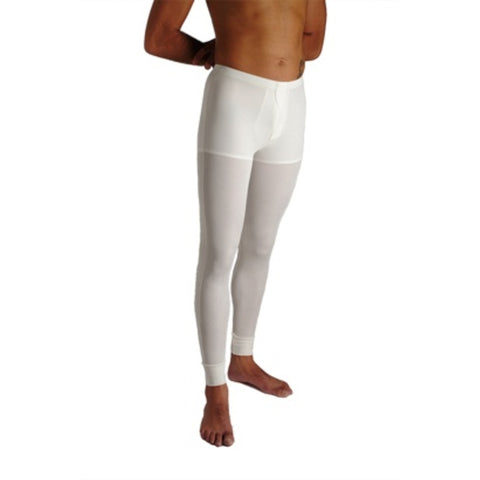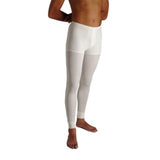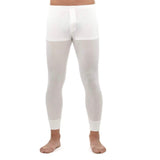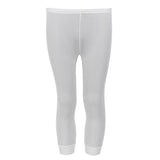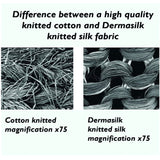DermaSilk Men's Therapeutic Leggings VAT Free
Protect, soothe and heal, day and night
Wear these featherlight Leggings as a silky layer under your trousers and at night.

Their comfortable stretchy shape and long cuffed legs make them fit like a second skin to offer protection against irritation from outer clothing, reduce the dreaded itch and help to heal damaged skin. They've been designed so you can wear them with the seams on the outside if you wish.
DermaSilk fabric is knitted from undyed medical grade pure silk bonded with Microbe Shield™, an antimicrobial that has been used in hospitals for over 20 years in theatre gowns. This Microbe Shield™ has been proven in clinical trials to inhibit bacterial and fungal growth, helping to heal skin with eczema, psoriasis and infections. Importantly, the Microbe Shield™ remains effective wash after wash and doesn't release chemicals or nano-particles onto the skin.
DermaSilk is cool and breathable and helps maintains a stable moisture balance on your skin, keeping it supple.
- lightweight, cool and comfortable
- Microbe Shield™ controls the spread of bacteria and fungi
- promotes healing
- proven effective as corticosteroids in published clinical trials
- calms and soothes
- 98% pure silk, 2% Lycra with Microbe Shield™
- hand wash, dry flat
- available VAT free
Available in 5 sizes to fit waist 80-112cm (see Specifications)
Team with DermaSilk Base Layer.
* Clinical trials: Antimicrobial Silk Clothing in the Treatment of Atopic Dermatitis Proves Comparable to Topical Corticosteroid Treatment. From Zurich University Hospital. Published in Dermatology September 2006. Issue 213 pp 228-233
